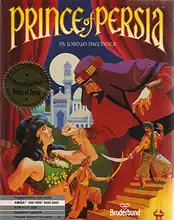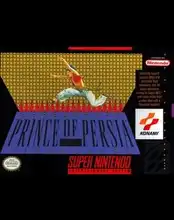Prince of Persia: Reliving the Classic Platforming Legend
Remember the first time you faced that seemingly impossible jump, or the sheer panic as the one-hour timer ticked down? For many retro gamers, the name Prince of Persia instantly conjures up memories of precise platforming, deadly traps, and revolutionary animation. More than just a game, the original 1989 release was a technical marvel and a masterclass in atmospheric design that left an indelible mark on the industry.
Let's take a trip back to the Sultan's palace and explore why this classic dungeon escape still holds a special place in our pixelated hearts and how it shaped the future of gaming.
The Original Masterpiece: Precision, Peril, and Pixels
When Prince of Persia first arrived on the scene, primarily for the Apple II and later DOS, it was unlike anything else. Created by Jordan Mechner, the game's standout feature was its incredibly fluid, lifelike animation. This wasn't just fancy graphics; it was achieved using a technique called rotoscoping, where live-action video of a person performing the movements (Mechner's brother, David, for the Prince) was traced frame by frame. The result was character movement that felt incredibly realistic, adding weight and believability to every run, jump, grab, and sword swing.
But the game wasn't just pretty; it was brutally challenging. Navigating the Sultan's dungeons meant dealing with:
- Fiendish Traps: Spikes, pressure plates, falling floors, and guillotines required split-second timing and careful observation.
- Guards: Sword combat was deliberate and tactical, a stark contrast to button mashing. Parrying and striking at the right moment were key.
- The Timer: You had just one hour to reach the princess before Jaffar's evil plan succeeded. This added immense pressure and made every death sting.
Mastering the controls – knowing the exact distance of a running jump, the precise timing to grab a ledge, or how walking slowly could save your life near an edge – was the core of the experience. It was frustrating, yes, but the feeling of finally clearing a difficult screen or figuring out a tricky puzzle was incredibly rewarding.
Beyond the Dungeon: The Franchise Evolves
While the 1989 original is often what comes to mind for retro fans, the Prince of Persia name has graced many titles over the decades.
- The Sequel: Prince of Persia 2: The Shadow and the Flame (1993) continued the story with expanded environments and challenges.
- The Leap to 3D: The franchise attempted the transition to 3D with Prince of Persia 3D (1999), a game that, while ambitious, struggled with controls and bugs.
- Ubisoft's Era: Ubisoft acquired the rights and successfully rebooted the series with Prince of Persia: The Sands of Time (2003), which added time manipulation mechanics and a more acrobatic combat system, leading to several successful sequels.
- Modern Takes: The series has seen further reboots (like the 2008 title) and recent entries like the critically acclaimed 2.5D platformer Prince of Persia: The Lost Crown (2024), showing the franchise's enduring adaptability. There have also been numerous mobile spin-offs, though their quality and adherence to the original spirit can vary wildly.
A Legacy That Jumps On
The impact of the original Prince of Persia extends far beyond its own sequels. Its fluid animation and focus on environmental navigation and puzzle-solving influenced countless games that followed.
Perhaps most notably, the wildly successful Assassin's Creed series actually originated from concepts explored for a new Prince of Persia game, evolving into its own distinct parkour-heavy open world. Even early 3D adventure games like Tomb Raider intentionally aimed to capture some of the feeling of navigating complex spaces that Prince of Persia pioneered. The emphasis on cinematic platforming and character movement that feels grounded and realistic owes a debt to the Prince.
Reliving the Classic Today
Feeling nostalgic? The good news is that the original Prince of Persia is still readily available for modern play.
- Digital Stores: GOG.com offers the classic DOS version bundled and ready to run, often with The Shadow and the Flame.
- Emulation: You can play the DOS version using emulators like DOSBox, or explore console versions (like the popular SNES port) via their respective emulators.
- Online Archives: Archive.org sometimes hosts browser-playable versions of classic DOS games, including the Prince.
While mobile remakes exist, many retro purists find the original experience, with its specific feel and challenge, is best preserved through emulation or digital storefronts that package the classic versions.
Quick Questions About Prince of Persia
- Is the original Prince of Persia game hard? Yes! The original 1989 game is known for its challenging platforming, strict one-hour time limit, and demanding combat, requiring precision and patience.
- How did Prince of Persia influence Assassin's Creed? The Assassin's Creed series evolved from ideas originally intended for a new Prince of Persia game focusing on parkour and environmental navigation in a large city.
- Where can I play the original Prince of Persia today? You can play the original game on platforms like GOG.com (which provides the DOS version with DOSBox pre-configured), or via DOSBox emulation on PC. Console versions can be played using emulators.
The Enduring Appeal
From its groundbreaking animation to its punishing-yet-rewarding gameplay, the original Prince of Persia remains a cornerstone of retro gaming. It taught us patience, precision, and the sweet taste of victory after countless falls into spike pits. Whether you're revisiting it for the hundredth time or experiencing its magic for the first time, the journey through the Sultan's palace is an adventure well worth taking. The legend of the Prince, scrambling against time and peril, continues to inspire.


